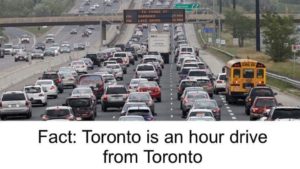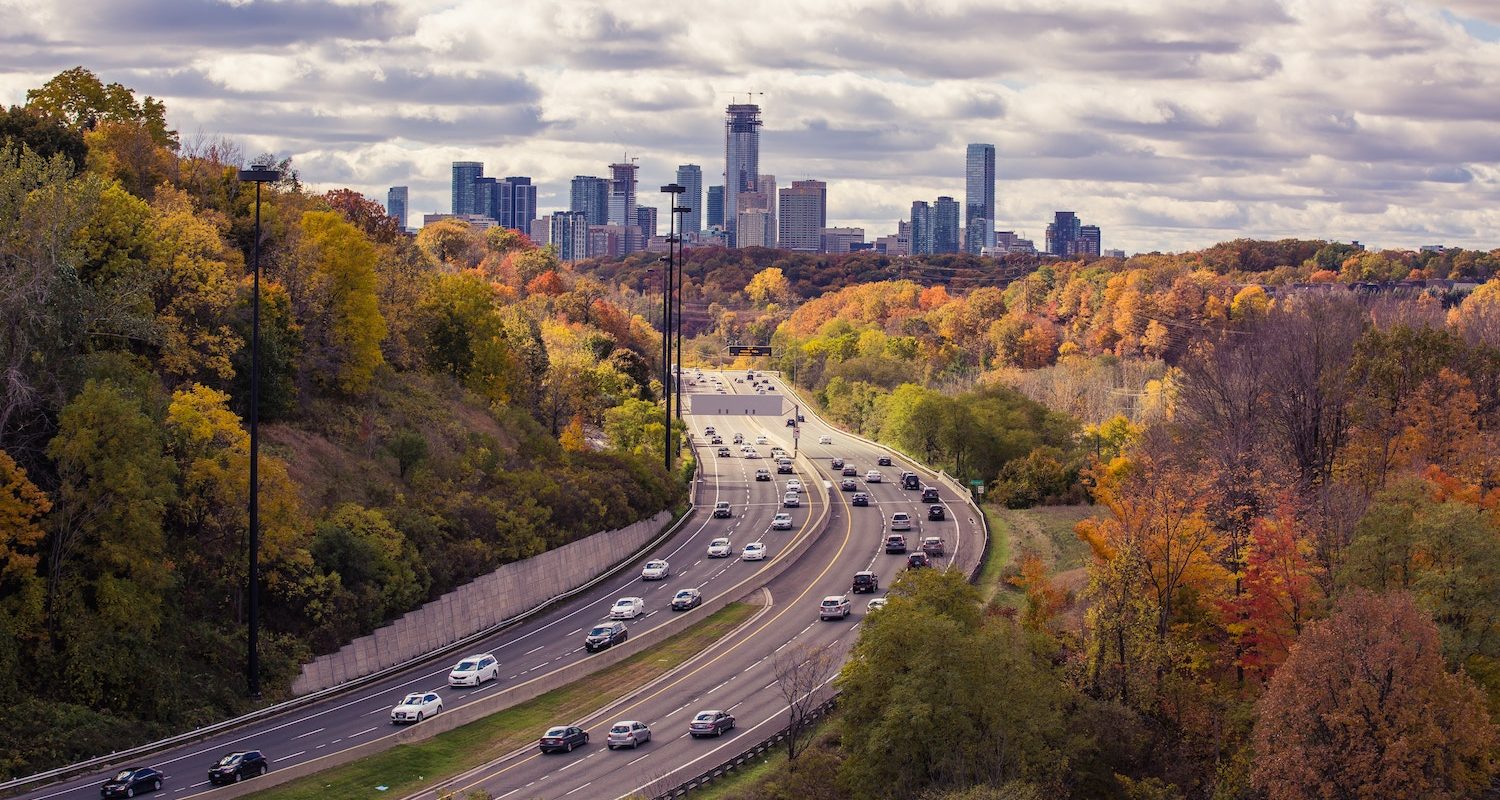The Plight of Toronto Congestion and City Development
EXPLORE

While you’ve been perusing social media over these last few weeks, you may have seen a meme going around that pokes fun at the congestion delays that Torontonians and GTA-dwellers deal with on a consistent basis.

Image courtesy of “Only in Canada”
It’s no wonder this meme is gaining attention online as commuters are relating to the stark truth that Toronto does have a congestion issue and, despite changes in the past to reduce it, it still remains to be a point of concern. So what can be done as the city continues to grow?
The Problem
Toronto has experienced exponential growth, which comes as no surprise as the skyline continues to change and evolve with each passing year. With the number of businesses and corporate companies vying for market share in one of Canada’s most iconic cities, it is a hub for innovation, technological advancement, and development.
With a surge in individuals calling Toronto and the surrounding areas home, commuter traffic has not only increased; but has reached a point where drivers and transit users are frustrated with the lack of circulation taking place on transitways and the costs that are mounting due to this. What many people do not realize as well, is that while they are stuck in traffic or delayed by congested transit services, so are products, materials and fellow coworkers, causing not only a delay in shipping and services but a decline in productivity as more time is spent in the car and less time is spent in the office.
The Solutions
A tug of war now exists as commuters, public entities, government officials, and key decision-makers in the transportation industry are attempting to identify the top issues that have resulted in a backlog of transit innovations, all while trying to find realistic solutions.
Vancouver and Montreal have the same issue as Toronto does, in that they are built near major bodies of water, causing expansion opportunities to be minimal. To combat this restriction on development, revised methods of transportation have been proposed.
Doug Ford announced the following as a potential solution.
“We’re going to build rapid, underground transit that’s going to extend not only in Toronto, but we’re the first government that’s going to run a regional transportation system.”
The problem, however, is that many times, public transit options only increase the time spent commuting. Humans will always take the path of least resistance, so if driving a car to work allows for less time in transit, they will choose that over public options.
A preference to save time by driving, however, only ends up increasing congestion and time spent in the vehicle as more individuals take to the roads. Therefore, several possible solutions have been pitched but have yet to be approved or implemented.
Implementing toll charges is one such proposal that has received mixed reviews. While some argue that tolls will help to cover the cost of road maintenance and limit the number of people on the highways, others argue that by charging tolls, those who chose to move outside of the GTA due to affordability are being unfairly targeted.
With congestion causing delays in the natural function of the city and the surrounding areas, it is estimated that over $6-billion dollars is lost annually. This takes into consideration accidents, construction projects, fuel, and greenhouse gas emissions.
How Will This Impact Development?
Construction projects continue to provide work within the GTA, whether it be in the construction industry itself, or in the buildings that are being developed that will soon house small businesses, large corporations, or central hubs for foreign investments.
Toronto is considered to be, “both North America’s fastest-growing city — it expects to add more than 100,000 people per year over the next decade — and Canada’s most congested,” so developers and transit officials will need to work together to develop in unison rather than separately.
Construction companies will also need to take into consideration how growing congestion will affect future projects as well, as with delays in shipments, materials, and more and more workers forced to pass the time in traffic themselves, longer timelines and higher construction costs will need to be accounted for. We are already seeing projects extend beyond current completion deadlines and as a result, policies be altered to meet changing requirements that are needed.
Toronto is a growing hub that will only continue to develop to allow for greater presence and economic impact in local and global markets. Adequate solutions for the development of proper infrastructure must be put in place, otherwise, congestion is going to severely cripple the growth of this city.

